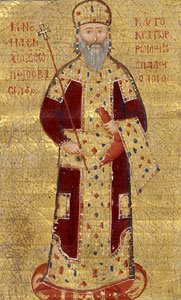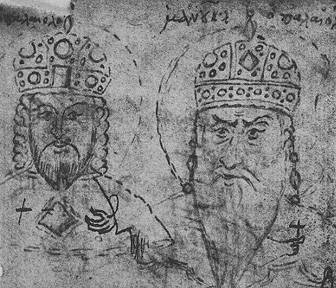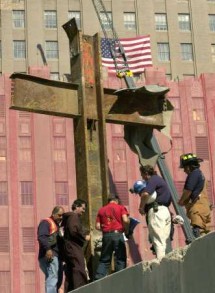She can't be five.Five years ago at 2:14pm, Madeleine Rochelle Price came into the world. All 8 pounds, 12 ounces and 22 inches of her.
Boy, was she was reluctant and angry. She was an induced birth and not at all happy about being evicted.
In fact, she was so out of sorts that they had to use what is essentially a vacuum to "coax" her out. This left her with a rather grim conehead that had vanished before she left the hospital.
I didn't get to hold her for quite a while--Heather did, but then after I "cut the cord" (think of those tawdry canned "hunting" expeditions and you're close to the level of participation on Dad's part) she was taken for the apgar and bilirubin checks, her eyewash and Vitamin K shot. I remember becoming very irritated and defensive about that process--"Hey, that's my daughter--step it up, can't you see she's crying?"
Sometime in the next hour, I was able to hold her, and the enormity slowly began to set in.
You are responsible for this little being.It wasn't a panic attack, but by the time we were putting her in the car seat to leave the hospital, I began to wonder if the world is nuts.
We've never done anything like this before! We haven't been trained! Good Lord, you're the experts--why are you handing her over to us?!That faded with time, and the competence began to develop.
Then her milestones began to fly past like the highway dashes you see in your headlights. So many that only a sampling is possible:
The first time Heather left her alone under Daddy's supervision--during which I was treated to a full 45 minutes of full-throated, unconsolable screaming. After which, she flopped against me and went to sleep.
Her first smile--right into the mirror after a bath.
Her first laugh--responding to a somewhat vulgar, if alliterative, reference to nursing as I carried her to Heather. I even turned it into a song, which got bigger giggles.
Her first taste of solid food--hummus. Not bad, she seemed to say. Probably explains why the quart containers from Costco last about 36 hours.
Her first steps, across our family room floor.
Her tentative reaction to the fact she had a brother, a look that said "You brought him
home?"
Her first phony crying fit, which followed me reprimanding her for misbehavior of one sort. Forced boo-hoos repeatedly punctuated by not-so-sneaky looks up at me to see if I was still paying attention. My email to Heather on that one was titled "Manipulative little snot."
First word--"mama," of course. But also the first time she asked for "Daddy."
Now it's "Dad," which always makes me a little wistful.
Her defense of our dog after Dad berates the hound for some infraction.
Her insisting on getting Mom and Dad's toothbrushes ready.
Her Danny Phantom crush.
Her memorizing the
Salve Regina.
Her joy at learning to read.
So many milestones, photos, achievements.
But the short of it is, every day I'm thankful for having her in our lives, however daunting the responsibility remains.
Happy birthday, Sprout.
 Courage Man informs us of the latest efforts to rorschach the term "family", in both Utah and Ontario.
Courage Man informs us of the latest efforts to rorschach the term "family", in both Utah and Ontario. 










